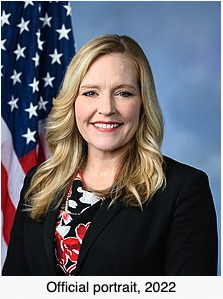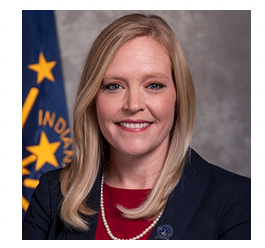
By Becky Killian, Staff Writer
A public hearing was held for the county’s proposed $27.1 million 2025 budget.
No members of the public opted to comment on the hearing, which was held Tuesday, Sept. 3, during the Washington County Council meeting.
The proposed 2025 budget represents an increase of $1.6 million over the current year’s budget.
The Council will likely adopt the budget during the Monday, Oct. 7, regular meeting. It will then be sent to the state for review.

By Becky Killian, Staff Writer
Officials have approved a $2 million loan to pay for the ongoing work at the new Washington County Highway Garage facility. The vote was made during the Tuesday, Sept. 3, meeting of the Washington County Council.
Representatives from First Savings Bank detailed how the loan will work:
The loan collateral will be $2 million in existing funds the county has and that will be invested in either a treasury bond or a certificate of deposit. The county will earn interest on the investment and the amount earned will depend on which type of investment officials choose.
The seven-year loan will have an estimated annual payment of about $350,000. The county has earmarked about $375,000 in existing County Economic Development Income Tax that will be used for the loan payment.
The loan interest will cost about $439,000 over the seven-year term.
“We’re not going to be raising taxes,” Commissioner Todd Ewen said. “We’re just trying to get this thing built.
Ground has already been broken on the $4.8 million highway garage. The project was undertaken as a Build-Operate-Transfer process (BOT), which Indiana law allows as an alternative to the traditional government building process that requires the government entity to get a design from an engineer, then seek bids, and obtain a bond to pay the costs. With the BOT, the county selects a developer who shoulders all costs until the project is completed to the satisfaction of the county. The developer is then paid a guaranteed pre-determined project cost.
Commissioners have pushed for the project, saying the highway department’s current facility is in a poor location and has insufficient room for supplies and equipment.


U.S. Congresswoman Erin Houchin from Indiana's 9th District
By: Jerry Curry, Staff Writer
United States Congresswoman Erin Houchin, representing Indiana’s 9th District, visited Salem High School on Tuesday, Sept. 3.
She discussed a survey asking constituents “What are your top priorities?”Categories and the rankings of these priorities included the following:
Inflation—35%
Securing the border—25%
Other—20%
Protecting Medicare—14%
Defending against adversaries—5%
Supporting veterans—3%
Protecting school choice—2%Is inflation really the item that should be of most concern? Yes—inflation adversely affects every citizen’s buying power. The rate of inflation from 2020 to 2024 has been 19.8%. This can be correlated to the price of consumable items.
How about border security as the second highest priority? In December 2023, 250,000 migrants crossed the border. In several months the total migrants reached 200,000 crossing the border each month since January 2020.
Since the inauguration of President Biden on January 20, 2021, over 3.3 million illegal immigrants have been released into the United States, according to the Committee on Judiciary and Subcommittee on Immigration Integrity.
Security and Enforcement are costing taxpayers billions at federal and state levels—estimated at over $150.7 billion. Big concerns.About Congresswoman Houchin:
Houchin serves on the House Financial Services Committee, the House Rules Committee and the House Education and Workforce Committee.Previously, she represented the 47th District in the Indiana Senate for eight years and served as a member on several committees with jurisdiction over issues important to Hoosiers, including: Commerce and Technology; Elections; Family and Children Services; Utilities; Veterans Affairs and the Military; Homeland Security and Transportation; Energy, Utilities, Telecommunications; and Ranking Member of the Tax and Fiscal Policy.

Additional information:
January 20, 2017—Donald Trump became president
January 20, 2021—Joe Biden became president

Illegal border crossings during the terms of the past two presidents.

Today, the Social Security Administration (SSA) announced progress this year to reduce customer burden by transitioning wet (physical) signature requirements to digital signatures for over 30 forms as well as removing the signature requirements altogether for 13 forms. These actions simplify application processes for people, including removing a potential reason for claims to be sent back or denied.
“Across forms that Americans use most often, we’re eliminating as many pain points as possible, from helping people sign at the click of a button to reducing the need to drive or mail something in whenever possible,” said Martin O’Malley, Commissioner of Social Security. “This means faster and more error-free processing and better service for our customers, who deserve a government that meets their needs efficiently and effectively.”
As a result of this work, SSA will now allow an electronic signature rather than a wet signature for more than 30 forms, which make up 90% of the most commonly used forms by SSA customers in local field offices. Collectively, these forms represent about 14 million signed forms submitted annually.
Furthermore, also this year, SSA has removed the signature requirement entirely for 13 of its most commonly used forms totaling about 1 million submissions in volume annually. This includes removing the signature requirement for the Medical Source Opinion of Patient’s Capability to Manage Benefits (Form SSA-787, which has a total annual volume of 768,000), the Letter to Employer Requesting Wage Information (Form SSA-L4201, which has an annual volume of 133,000), and Request for Reconsideration/Disability Cessation Right to Appear (Form SSA-789, which has an annual volume of 49,000). Customers may also upload many of the 13 forms online, further reducing the burden felt by customers.
To build on this progress, SSA is considering removal of signature requirements on other forms that would ease requirements on about 1 million additional transactions.
Social Security works to pay the right people at the right time in the correct amount. These efforts ensure we maintain strong anti-fraud protections while removing onerous requirements that are not serving their intended purposes.
These efforts also complement other initiatives to modernize and streamline operations. The agency is expanding paperless communication options for millions of my Social Security users so they can see their online Social Security Statement, track the status of their claims, and calculate potential retirement benefits. Notices from across 60 categories are now provided through mySocial Security for easy online access by customers, including the Cost-of-Living Adjustment, their SSA-1099, Benefit Rate Increases, Appointment Confirmations, and more.
New my Social Security account holders can choose online-only communications with one click, and others are encouraged to transition for an enhanced experience.
Social Security is undertaking this work in alignment with the Executive Order on Transforming Federal Customer Experience and Service Delivery to Rebuild Trust in Government (E.O. 14058), the Office of Management and Budget’s (OMB) guidance Delivering a Digital-First Public Experience (M-23-22), and OMB guidance Improving Access to Public Benefits Programs Through the Paperwork Reduction Act (M-22-10).
To hear directly from Commissioner O'Malley and learn more about the efforts to remove wet signature requirements, visit the agency’s YouTube page.

Please review the proposed amendments for the following MPOs: KHCGCC, MACOG, MCCOG, NIRCC and NIRPC here. You can use this map to find out if you live in an MPO area and which one. To access the project list, scroll to the bottom of the page and find the link under the heading "Draft STIP Documents." The link to the comment form is just below the amendment link.
Check out this map to view current and future INDOT construction projects in your area of interest!
The public comment period is open through Thursday, Sept. 5th, 2024. Please share your comments by using this form, emailing to
INDOT Attn: Cat Seely, Planning Public Outreach Manager 100 N. Senate Ave., IGCN 758-TE Indianapolis, IN 46204
What is the STIP?
The State Transportation Improvement Program (STIP) is Indiana’s four planning and construction document that lists all projects, and project phases, expected to be funded within 5 years with federal funds as well as state-funded projects that has been deemed Regionally Significant. It is prepared in cooperation with local government entities throughout Indiana, including Transportation Planning Regions (TPRs), Metropolitan Planning Organizations (MPOs), and Regional Planning Organizations (RPOs). The STIP identifies the funding and the scheduling of transportation projects and programs by fiscal year (July 1 through June 30). It includes all state and local transportation projects funded with federal highway and/or federal transit funding along with 100 percent state funded transportation projects (including highway, passenger rail, freight, public transit, bicycle and pedestrian, and projects in the national parks).
The STIP is the culmination of INDOT’s and the MPO's planning processes and translates the objectives set forth in INDOT’s long-range transportation plans, the Transportation Asset Management Plan (TAMP) and Strategic Asset Management Plan (SAMP), asset lifecycle strategies, and Asset Teams’ business rules into committed projects for the upcoming four-year period.
The STIP is developed on a two-year cycle, amended monthly, and must be approved by the Federal Highway Administration (FHWA) and the Federal Transit Administration (FTA). Indiana is currently operating under the 2022-2026 STIP. Visit the STIP web page to learn more!
Why is it being amended?
Periodically, changes are made to a project’s scope, cost and year of proposed construction. Changes are made with either amendment or an administrative modification to the STIP.
Major changes to the STIP require an amendment with a public comment period. Examples are:
- Adding a new project or phase that was not included in the current STIP
- A significant increase or decrease in project cost
- A change in project scope
What is an Administrative Modification?
Minor changes to the STIP can be made with an Administrative Modification. Examples are:
- A designation number change (this identifies what year the project was accepted into the production schedule)
- A change in project schedule whereas the timing of activities is modified to occur within an adjusted timeframe (within the 4-year funding period)
Administrative modifications are not required to be presented for public comment and are not approved by FHWA and FTA.
Why is this Important?
The STIP must be fiscally constrained. Only projects for which construction and operating funds are available are included. If a project is not included in a STIP, it is not eligible to receive federal funding.
SalemLeader.com
Leader Publishing Company of Salem, Inc.
P.O. Box 506
117-119 East Walnut Street
Salem, Indiana. 47167
Phone: 812-883-3281 | Fax: 812-883-4446
Business Hours:
Mondays through Fridays, 9:00am - 5:00pm
News:
news@salemleader.com
Office:
office@salemleader.com
Publisher:
publisher@salemleader.com
Business
- More Business News
- Go To Guide
- Business Directory
- Auctions
Education
- More Education News
Opinion
- Editorials
- Letters to the Editor
- Columns
- Unsung Heroes
- Days Gone By
- In the Garden
- Guest Columns
- Reader's Poll
- Salem Leader Forum
- Questions and Answers
Church
- Bible Aerobics
- Church News
- Church Directory

